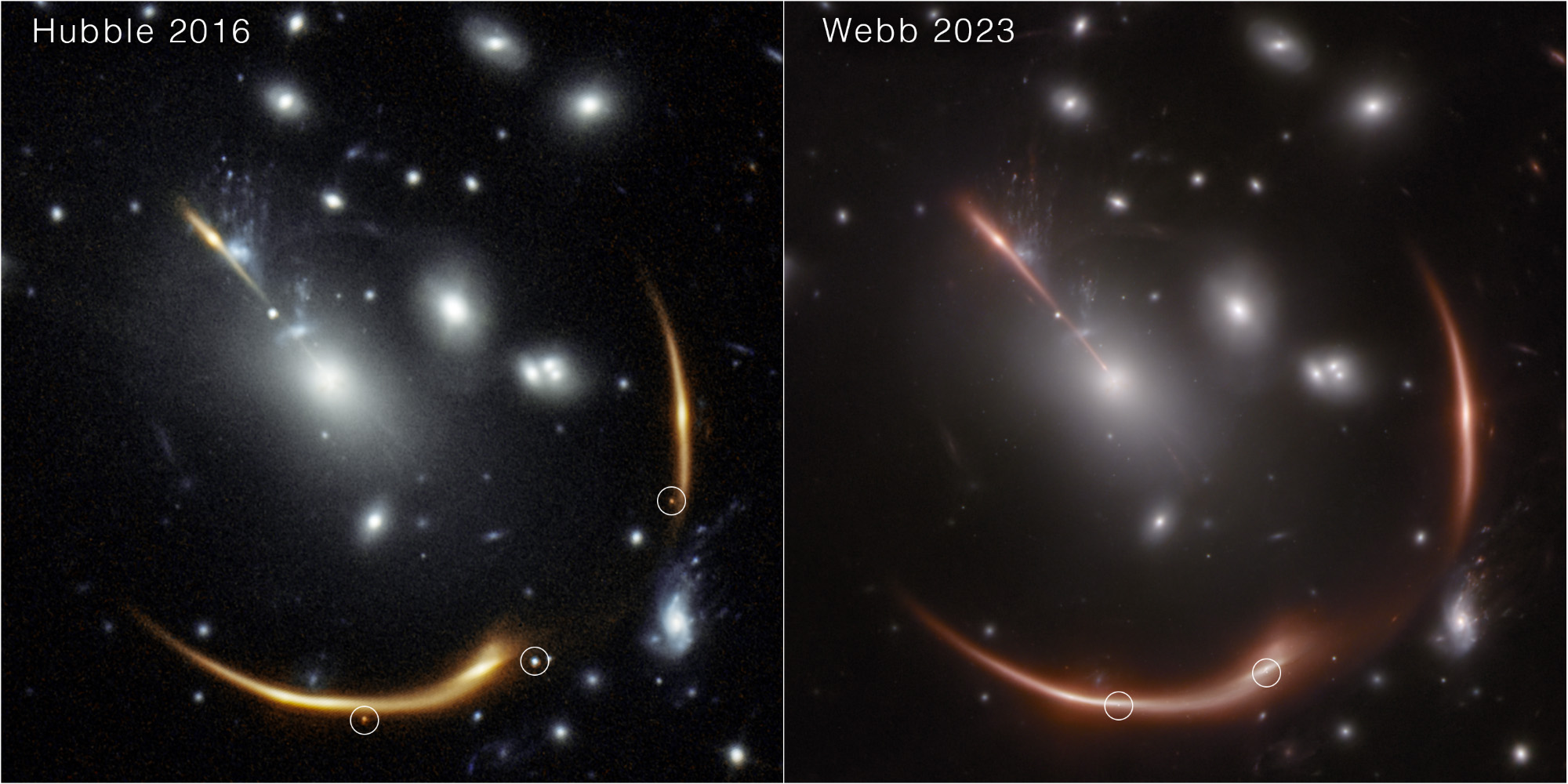Massive clusters of galaxies warp space-time to such a degree that they act like a lens. The light of galaxies even further away is distorted and magnified, giving astronomers a chance to see details further than usually possible. The case of galaxy MRG-M0138 is particularly exciting, as this was seen by Hubble having had a supernova explosion, which they called Requiem. Now, it’s been announced that JWST spotted a new supernova in November 2023 – exciting news not just for supernovae observations, but because it can help us understand the expansion of the universe.
The cluster of galaxies in front of MRG-M0138 creates five distinct images of the galaxy, which means five distinct views of the supernova. The light takes different paths, and in one path, it takes a lot longer to get to us; it is estimated that this image of the explosion will not appear to us until the 2030s.
“When a supernova explodes behind a gravitational lens, its light reaches Earth by several different paths. We can compare these paths to several trains that leave a station at the same time, all traveling at the same speed and bound for the same location. Each train takes a different route, and because of the differences in trip length and terrain, the trains do not arrive at their destination at the same time,” Justin Pierel, from the Space Telescope Science Institute, and Andrew Newman, from the Carnegie Institution for Science, wrote in a statement.
“Similarly, gravitationally lensed supernova images appear to astronomers over days, weeks, or even years. By measuring differences in the times that the supernova images appear, we can measure the history of the expansion rate of the universe, known as the Hubble constant, which is a major challenge in cosmology today. The catch is that these multiply imaged supernovae are extremely rare: fewer than a dozen have been detected until now.”
Requiem was a Type Ia supernova. These events are created by a white dwarf stealing enough material from a companion that it crosses a mass threshold and collapses under its own weight. Since the threshold is the same, the supernova reaches the same luminosity – it’s a standard candle. How bright an object is depends on its intrinsic luminosity and its distance. We can measure the brightness and the luminosity is a given for standard candles, so we can use both measurements to work out the distance of galaxies. From there, we get to the other cosmological properties.

Location and view of Requiem on the left, and Encore on the right.
Hubble image credit: NASA, ESA, STScI, Steve A. Rodney (University of South Carolina) and Gabriel Brammer (Cosmic Dawn Center/Niels Bohr Institute/University of Copenhagen); JWST image credit: NASA, ESA, CSA, STScI, Justin Pierel (STScI) and Andrew Newman (Carnegie Institution for Science).
Hubble got to Requiem too late to do detailed calculations from the four images, so work will be done next decade on the fifth. But JWST caught the event in the act, and the team was awarded extra time to follow up on the event immediately.
“Now we have found a second gravitationally lensed supernova within the same galaxy as Requiem, which we call Supernova Encore. Encore was discovered serendipitously, and we are now actively following the ongoing supernova with a time-critical director’s discretionary program,” the duo continued.
Encore too is a Type Ia supernova, making this a serendipitous and fortunate observation. Data collection is ongoing, so we will know more in the coming months. And of course, there will be an encore in the 2030s.
“Supernovae are normally unpredictable, but in this case we know when and where to look to see the final appearances of Requiem and Encore. Infrared observations around 2035 will catch their last hurrah and deliver a new and precise measurement of the Hubble constant,” the researchers concluded.
Source Link: Supernova In Lensed Galaxy Spotted By JWST – And Its Light Will Reappear In The Future